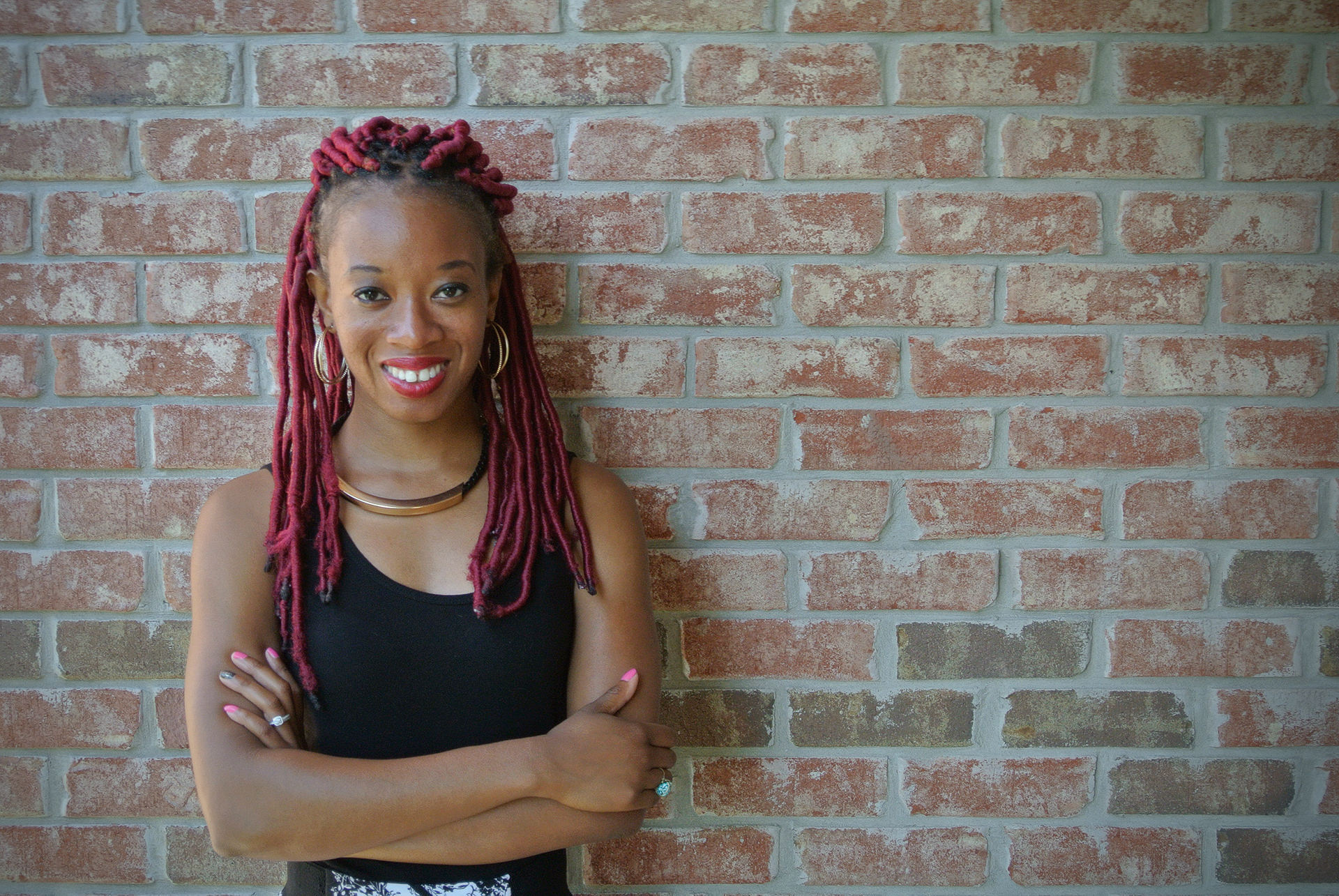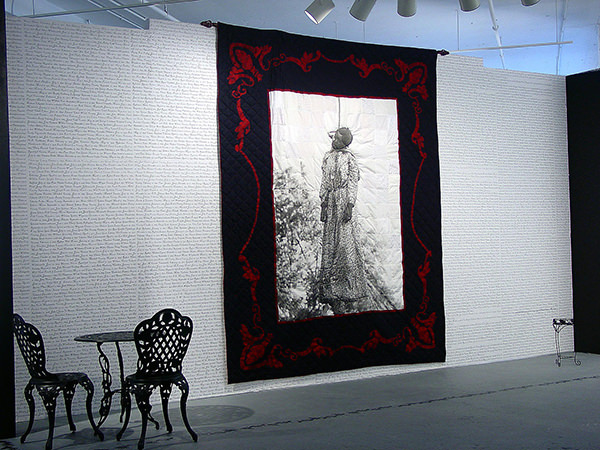

It all leads to this point
Ratcliffe uses thesis to explore impact of 'The Lynch Quilts Projects'
By Liz Gladieux
Learn more about the Art History program in the School of Art.
“So many different things led me to this point in my life,” said Viola Ratcliffe, who will receive her Master of Fine Arts degree in art history at the August commencement ceremonies.
Ratcliffe’s thesis was focused on “Her Name Was Lara Nelson,” one of the quilts in LaShawnda Crowe Storm’s independent art project “The Lynch Quilt Projects,” which was displayed in BGSU’s Fine Arts Center in early 2015.
The quilt features a startling, 5-foot-8-inch, black and white image of a woman being lynched in Oklahoma. “It struck me hard; I felt uncomfortable,” said Ratcliffe. “It was painful, but you couldn’t look away. I felt personally connected just looking at her. She was a mother, a wife and a member of the community where she lived.”

“It struck me hard; I felt uncomfortable... It was painful, but you couldn't look away.”
This was not at all the type of quilt Ratcliffe was used to. “Quilting and other handmade items are part of the history of my family,” she said. Her mother, sister, great-aunt and other members of the family have always created fabric artwork. “My great-aunt made me a quilt when I was younger,” she said. “It is still very special to me.”
Ratcliffe received her undergraduate degree in art history from the University of Alabama and is especially interested in local and lesser-known artists. “Local artists reflect life where they live and connect on a personal level,” she said.
“I knew I was interested in African American art, but the interest keeps growing,” she said. When Crow Storm’s exhibit was at BGSU, Ratcliffe got to spend time with her and introduced her ARTalk on “Art as a Vehicle for Dialogue and Social Change.”
“The quilts are not all made by LaShawnda,” said Ratcliffe. “She will come up with the themes and then they are made by interested people who want to help. The process is very much like a modern day quilting bee.”
Quilts are usually associated with comfort, warmth and safety. “But now they are reaching out with a social commentary and joining the conversation on racial violence,” Ratcliffe said. “When I listened to LaShawnda, I found we agreed on so many things.
“It all started coming together for me,” she said. “At Alabama, I wrote a paper on lynch photography. It stayed with me, and seeing the quilts awakened that interest.”
Ratcliffe’s awareness developed even before the current wave of racially motivated killings and confrontations in the news. “Before Trayvon Martin and Ferguson, these quilts had my interest and attention,” said Ratcliffe. “Now it seems more timely. Over the course of this year it has become more and more relevant. We still need to confront those issues and have that conversation.”
Ratcliffe’s time at BGSU has been challenging for her personal life.
“I was admitted to BGSU before my husband and I moved over by Muncie, Ind.,” she said. “The BGSU faculty gave me support and so many opportunities.” She commutes weekly so she can spend time with her family on the weekends.
“I’m glad I stuck it out at BGSU,” said Ratcliffe, who also traveled to Europe last summer to participate in the Fulbright-Hays funded program “Walking Witness: Civic Responsibility in the Shadow of the Holocaust” with BGSU Digital Arts Chair Heather Elliot-Famularo and Dr. Tim Murnen, an associate professor in the Division of Teaching and Learning. Ratcliffe was the only graduate student on the trip.
Ratcliffe said her classes with Dr. Allison Terry-Fritsch, associate professor of renaissance art and culture, were “the hardest I’ve ever taken. But she made me realize I had to deliver a thesis and papers that I’m truly proud of.”
Terry-Fritsch is enthusiastic about Ratcliffe. “Viola has a great sense of humor and cultivated a good balance between her studies and her personal life, which is important for all-around well-being during an intense program such as the M.A. in art history at BGSU,” she said. “Her thesis focused on a difficult subject within American culture, the violence suffered by the black community during the so-called lynching era, so this balance helped her to negotiate the heavy burden of scholarship into trauma theory, Holocaust studies, and, of course, black history. She is committed to putting her scholarship into action and wants to use her BGSU degree to help change society through community activism and arts outreach.”
After receiving her bachelor’s degree, Ratcliffe became curator of the Rosa Parks Museum on the campus of Troy University in Montgomery, Ala.
“I didn’t know I had the ability to be a curator,” said Ratcliffe. “But Georgette Norman from the Rosa Parks Museum encouraged and mentored me.” At the museum, Ratcliffe booked events, handled programming, designed exhibitions and planned future works.
After graduating from BGSU, Ratcliffe wants to work in a place like the Rosa Parks Museum doing programming. “Not necessarily just art,” she said. “I want to be able to facilitate relevant conversations on social justice awareness.”
Updated: 12/02/2017 12:47AM
